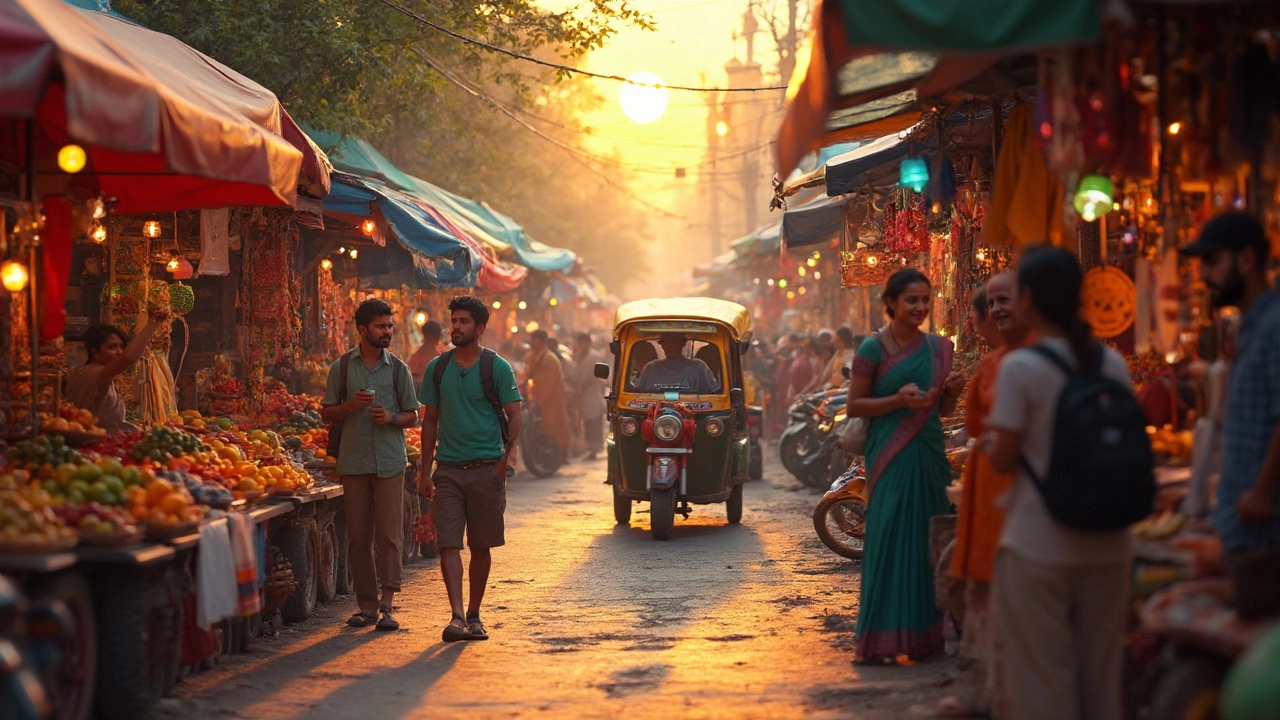SEARCH
India Travel Cost Guide: Plan Your Budget Smartly
Thinking about exploring India but worried about the price tag? You’re not alone. Travelers often ask, "How much will I actually spend?" The answer depends on where you go, how you move, and what kind of experience you want. Below we break down the main cost factors so you can set a realistic budget and avoid surprise fees.
Daily Expense Breakdown
Most visitors can sort their daily spend into three tiers. A budget traveler usually spends ₹800‑₹1,200 per day, covering a dorm‑style hostel, street food, and public transport. Mid‑range travelers often budget ₹2,000‑₹3,500, which gets them a comfortable guesthouse, a few restaurant meals, and occasional rideshares. Luxury seekers plan for ₹6,000‑₹10,000+ a day, covering boutique hotels, fine dining, and private tours. Adjust these numbers based on the region – metros like Delhi and Mumbai are pricier than smaller towns.
Transport is the next big chunk. Domestic flights can range from ₹2,000 to ₹8,000 per leg, depending on distance and how early you book. Trains are a popular cheaper option: a sleeper class ticket on a long route costs around ₹500‑₹1,200, while AC 2‑tier runs about ₹1,500‑₹2,500. Buses are the lowest‑cost choice, often under ₹500 for intercity trips.
Where you sleep also shapes your budget. Hostels and budget hotels start at ₹500‑₹800 per night in most cities. Mid‑range hotels hover between ₹1,500‑₹3,000, offering air‑conditioning and breakfast. Luxury hotels in major cities can start at ₹5,000 and climb quickly with added amenities.
Food is where you can really control costs. Street stalls and local thalis give you a filling meal for ₹100‑₹250. Mid‑range restaurants charge ₹300‑₹700 per plate. Upscale dining can easily top ₹1,200. Remember, a cup of chai costs less than ₹30, so you can stay hydrated without breaking the bank.
Entry fees for monuments, parks, and museums usually range from free to ₹500. Some popular sites like the Taj Mahal have higher fees for foreign tourists (around ₹1,300). Always check online before you go to avoid unexpected charges.
Smart Ways to Save Money
Book flights and trains early – prices can drop 30% – 50% when you reserve weeks in advance. Use Indian travel apps that offer flash sales and coupon codes. When staying longer than three nights, ask the hotel for a discount; many will shave off 10%‑15% without any fuss.
Travel off‑season (typically March‑May and September‑November) to enjoy lower accommodation rates and fewer crowds. Public transport passes, like the metro day pass in Delhi, can cut daily commute costs dramatically.
- Eat where locals eat – markets and small eateries give authentic flavor at a fraction of restaurant prices.
- Combine sightseeing – many sites are near each other, so you can walk or use a short auto‑rickshaw ride instead of hiring a car.
- Negotiate fares – for rickshaws and taxis, especially outside big cities, a quick bargain can shave off 20%.
Here’s a quick sample budget for a 10‑day trip:
- Budget: ₹12,000‑₹15,000 (hostels, street food, trains)
- Mid‑range: ₹25,000‑₹35,000 (3‑star hotels, mix of flights/trains, restaurant meals)
- Luxury: ₹70,000+ (5‑star hotels, domestic flights, fine dining)
Use these numbers as a starting point, then tweak them to match your travel style. With a clear picture of daily costs, transport options, and smart savings tricks, you can enjoy India’s incredible diversity without worrying about money.

Why Is a Trip to India So Expensive? Explained
Explore why trips to India often feel pricey, break down the main cost drivers, and learn practical tips to keep your travel budget in check.
Continue reading
Is India Expensive as a Tourist? Real Costs, Smart Tricks, and Surprises
Thinking about traveling to India? You might be wondering if your savings will last or disappear too quickly. This article breaks down what tourists actually pay across the country, from cheap eats and hostels to splurges and hidden costs. Expect practical tips, stories from real travelers, and up-to-date prices for 2025. Planning a smart, affordable trip to India is easier than you think.
Continue reading